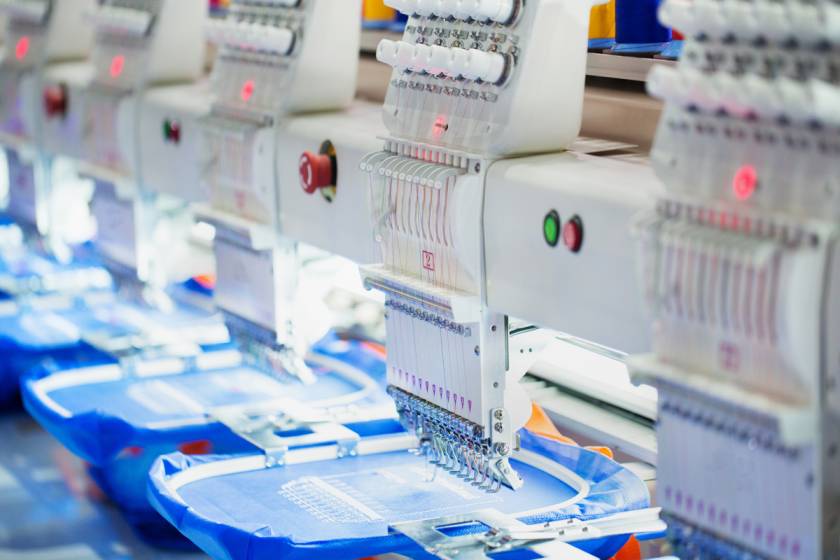Sewing Automations in the Apparel Industry: An Overview



From sourcing fibers to packaging the final product, the apparel industry is highly labor intensive. The major operations of the labor-intensive apparel manufacturing sector can be categorized into three segments: preproduction, production, and postproduction operations, all of which are mostly reliant on manual labor.
In the recent years, the industry has been witnessing an automation revolution. 'Automation revolution' specifically refers to the use of automation, mechanical or electronic devices, to replace human labor, in the process of apparel production. Electric sewing machines have been used for decades, but now we have a range of advanced sewing automations that are ever evolving and taking over the industry.
The Sewbot
It is one of the most advanced sewing automations that takes only an hour to produce 15-20 t-shirts. It has a modular base design and is built to run 24/7 all through the year.
Sewbot’s system uses a highly calibrated machine vision to watch and analyze the fabric, which helps it to detect distortions and make adjustments as per the necessities.
Working across a 70-foot long t-shirt production line, the robot performs each task including cutting, sewing a seam, adding a sleeve, and quality inspection. At each step along the way, the computer vision of the Sewbot guides the fabric.
Computerized Sewing/ Embroidery Machine
This is a variant of electronic sewing machine that comes with an additional ability to do embroidery work.
Computerized sewing/ embroidery machines can make as many as 7 different types of buttonholes in one step, a range of decorative stitches, and automatic needle threading. A LCD display screen on the frontside with easy-to-use stitch selector is present in the machine, and there are also options to implement speed control and other functions.

These machines are mostly used for industrial purposes, where large scale fabrics need to be designed within a very short span of time. They have an autopilot stitching mode where the machine automatically controls the speed, thread tension, and stitch strength.
The advent of such automated sewing machines is radically altering the production capacity of the clothing industry.
Robotic 3D Sewing Technology
The Robotic 3D Sewing Technology uses a sewing machine on a robotic arm to sew the threads onto the 3D-formed leather, along the paths provided by the CAD (Computer Aided Design) model.
Robotic 3D sewing technology also helps to reduce labor costs, production time, and to increase efficiency and productivity. It effectively reduces the scrap ratio compared to manual sewing.
Real-Time Monitoring in Sewing Machines
These smart sewing machines are connected to a network through a server, which can be operated and supervised using a smartphone or a tablet from anywhere in the world. The intelligent machine network allows to view the status of a whole production line as well as individual machines in real time.

This real-time status not only helps in the detection of probable obstructions during production but also generates the scope to improve productivity. This embodies a proper application of the Intelligent Sewing System (ISS).
More importantly, the technology can be used to introduce unforeseen transparency within the supply chain, with the opportunity for brands to experience real-time visibility so far as the production status of their orders are concerned.
Modular Sewing Machine
This automated model does not have a rigid function. Here, components of the machine can be changed and it can be fitted with new components to adjust to future needs. This eliminates the need to buy a new machine with time, thus increasing the flexibility of the existing sewing machine. Reparations also require the replacement of an old module with a new one, thus reducing down times and possible bottlenecks in production.
Benefits of Advanced Sewing Automations
1. Automated sewing machines save time and increase productivity. A Sewbot can produce 15-20 T-Shirts in an hour.
2. The cost of production becomes considerably less since one-time investment on a machine can replace the recurring wage payments to the artisans.
3. Human errors can be avoided since the machines are programmed to work with accuracy.
4. Automations increase the scope for innovations and designs, which are otherwise difficult or impossible to through using human skills.
The Disadvantages of Automations
1. Elimination of human labor leads to loss of employment and gradual dissipation of specific traditional skills.
2. Machine made apparels don’t have the aesthetic value that human artistry induces.
3. Bulk production of clothes by machines in the apparel industry leads to a concentration of the same designs, thus reducing variety.
4. Many local and ingenious factories are suffering because they cannot compete with the fast production of machine driven apparel industries.



















